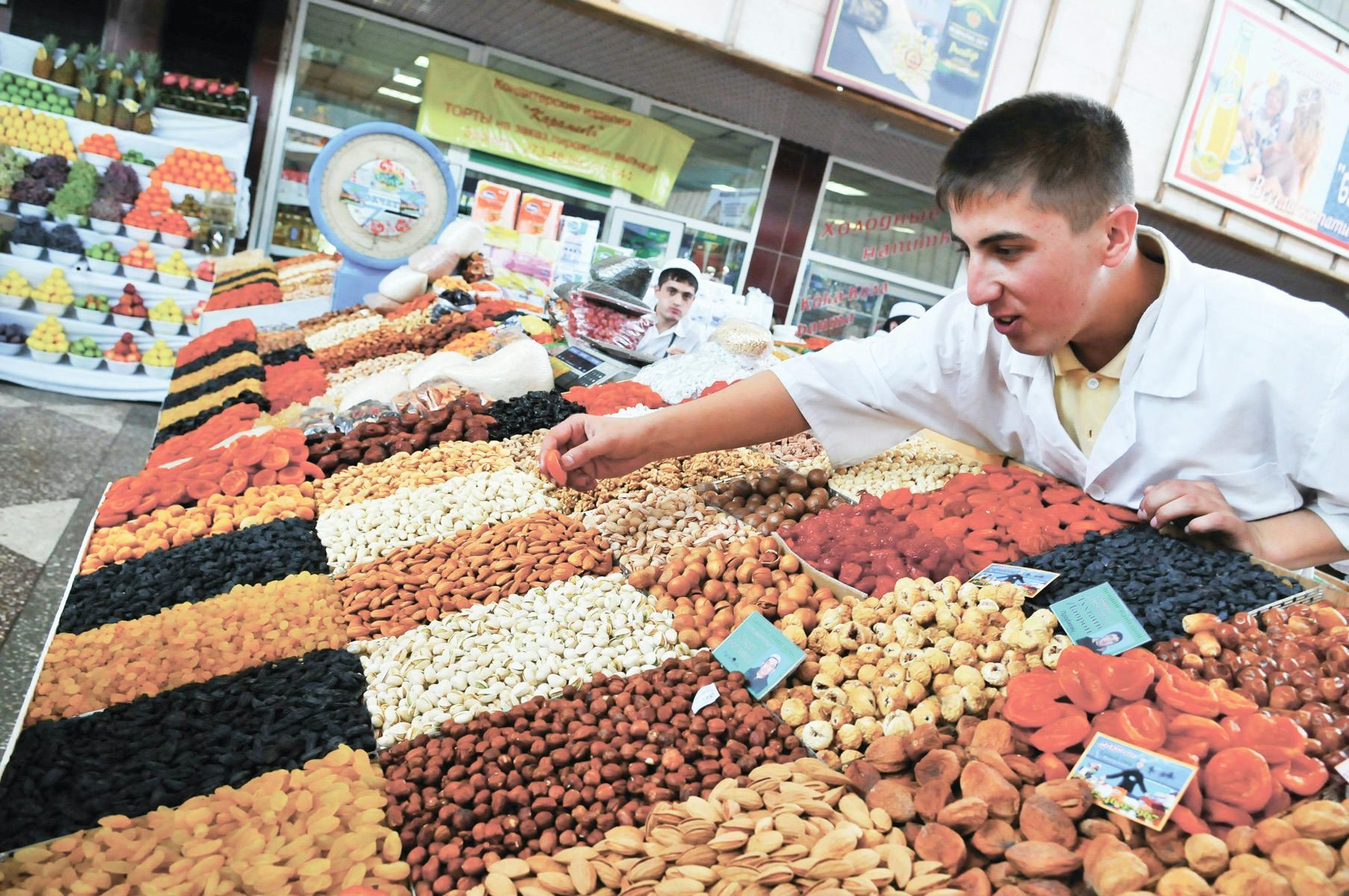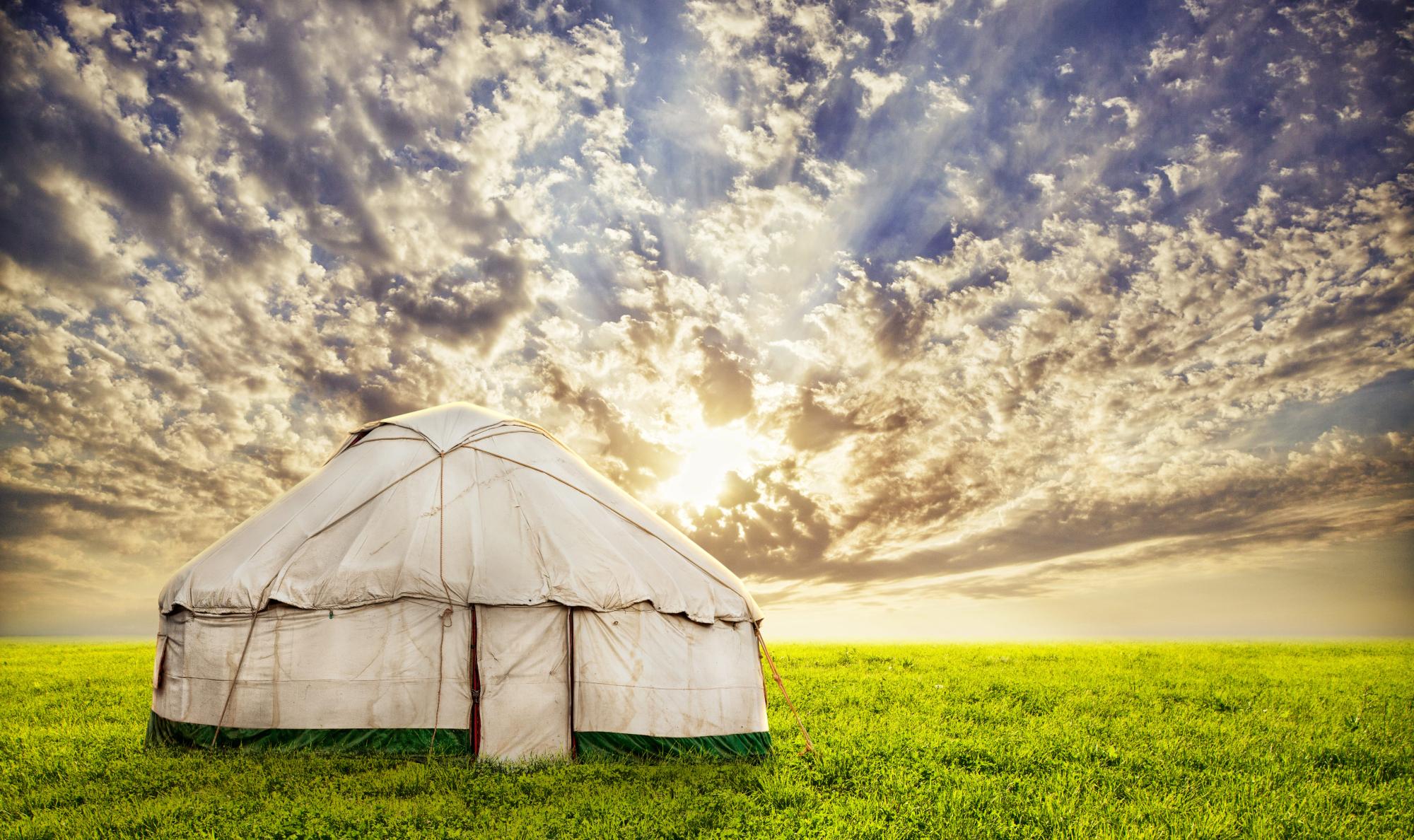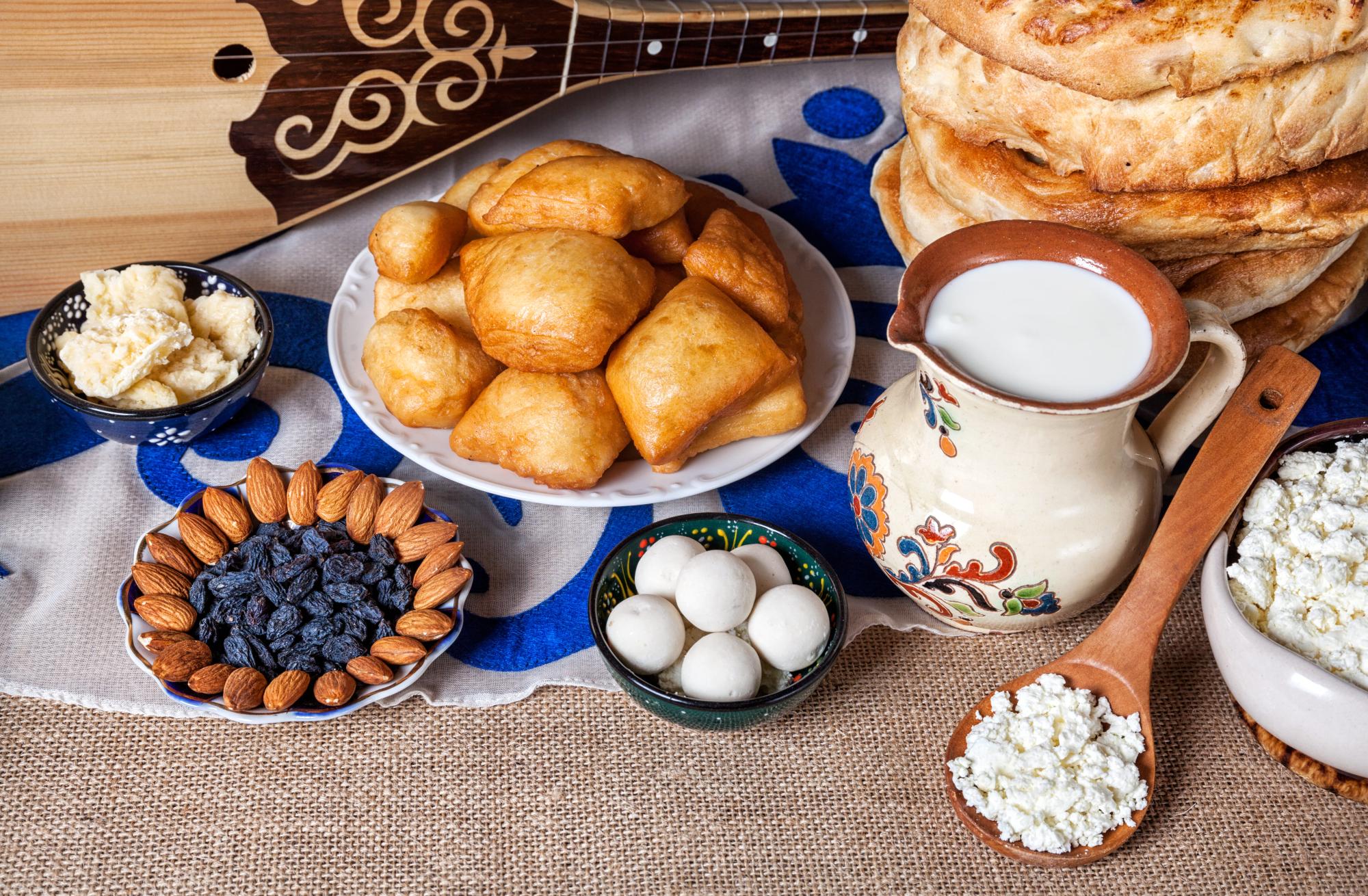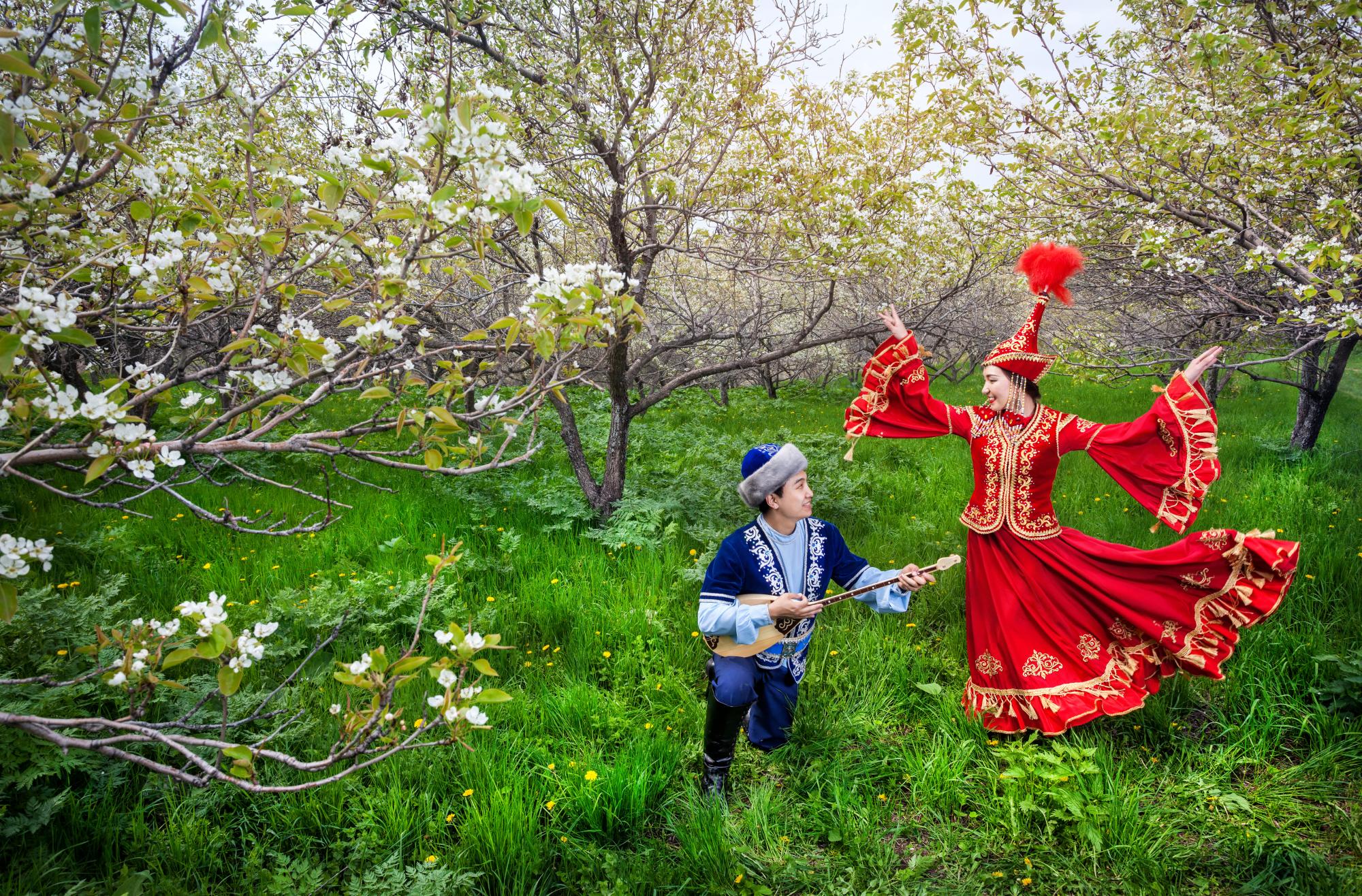
Central Asia is a treasure trove of vibrant colors, aromas, and authentic goods. Here, street bazaars stand side by side with modern shopping malls, where you can find silk from the East, woolen rugs from the mountains, and fragrant spices from desert oases. Below you’ll find the main shopping destinations and several universal tips to help you navigate: how to haggle, what to look for when choosing items, and how to avoid fakes.
Main Shopping Destinations
1. Green Bazaar (Almaty)
Almaty’s central market overflows with fresh fruits, vegetables, dried fruits, and spices. But it’s not only food that makes it noteworthy. On the upper levels, you’ll find stalls selling traditional clothing (felt jackets, embroidered chapan robes), Eastern sweets, and folk crafts. You can also purchase natural honey, kumis (fermented mare’s milk), and homemade cheeses. Hidden between narrow aisles of produce, vendors display cotton and fine silk scarves, while under the counters are piles of small rugs and Kyrgyz felt souvenirs.
2. Chorsu Bazaar (Tashkent)
One of Central Asia’s oldest markets, located in the heart of Tashkent’s old city. Its vaulted arches shield you from the sun as life bustles through its narrow lanes 24/7. Here, you will find everything: from Uzbek rice for pilaf and matcha sauce to luxurious brocade fabrics and completely hand‑woven tülpanuş (silk scarves). Don’t miss the countless stalls offering embroidered crafts, traditional costumes, and regional footwear—such as nazida (small slippers) and khompar (thin boots). Among the spice stalls, look for barberries, cumin, and saffron; among the sweets, try marzipan and rosewater-scented lokum.
3. Dordoi Bazaar (Bishkek)
A massive wholesale and retail complex where countless stalls and small shops sell nearly everything: from mass‑market and imitation designer clothing to furniture, electronics, and kitchenware. The second floor and covered walkways are dedicated to textiles—an ideal place to hunt for genuine handmade rugs, embroidered fabrics, and traditional yurts made of felt. While Dordoi is often dubbed the “market of knock‑offs,” you can still find legitimate, high‑quality items: some artisans bring genuine handwoven carpets, hand‑embroidered apparel, and felt crafts. The spice and dried fruit sections are equally impressive, offering saffron, local honey, and spice blends for pilaf.
4. Modern Malls and Shopping Centers
Across Central Asia’s largest cities, international‑standard malls have opened. In Almaty, you’ll find “Mega” and “Esentai Mall”; in Bishkek, “Dordoi Plaza”; and in Tashkent, “Dewon Plaza” and “Next.” These centers feature boutiques from local designers as well as well‑known global fashion, footwear, and accessory brands. Keep an eye out for artisan corners inside these malls where you can discover items from contemporary Kazakh, Uzbek, and Kyrgyz designers who blend national motifs with modern style—think scarves with geometric embroidery, bags with felt appliqués, and jewelry featuring ethnic patterns.
Secrets to Successful Bargaining
Don't show too much enthusiasm.
If the seller senses you are extremely interested, they will immediately raise the price. It’s better to browse other stalls and only return to the desired item later.
Start at 40–50 % of the asking price.
On bazaars, it’s customary to negotiate down by at least half. If a vendor quotes 10 000 som, begin by offering 5 000, then gradually increase your bid until you meet in the middle.
Create a “walking away” moment.
Sellers are more likely to lower their price if they think you are about to leave. Close the gap between your interest and your intent to walk away—often the vendor will reduce the price to keep your business.
Check items for quality.
For carpets and woven goods, gently lift a corner to confirm that the edges don’t fray and that the pattern is clearly defined. With spices, take a whiff—cumin should emit a sharp, immediate aroma, without any mustiness.
Make small “test” purchases.
If you plan to buy a large carpet, first purchase a small felt souvenir or fabric sample from the same seller. This way, you can assess quality before committing to a larger investment.
How to Spot Authentic Goods and Avoid Counterfeits
Silk Products:
True Central Asian silk is handwoven and dyed using natural dyes like henna, walnut husks, and herbs. When buying a silk scarf, inspect the edges: high-quality silk will not have loose threads, and the pattern will be nearly identical on both sides. If the fabric feels slippery (a sign of synthetic imitation), move on.
Carpets and Felt Goods:
Handmade carpets are typically denser and heavier than machine‑made ones. Run your hand over the nap: genuine wool leaves a fuzzy residue on your fingers, and the knots on the backside create a slightly uneven but solid texture. For felt items, press firmly—good felt should resist indentation and spring back quickly when rolled.
Spices and Dried Fruits:
Barberries should be plump and free of wrinkles or mold. Test saffron by placing a few threads in warm water: true saffron will color the water a deep golden‑red. In the case of honey, look for crystallization in the jar. If the honey remains excessively liquid even in a cool environment, it’s likely diluted.
Traditional Clothing:
Market stalls often offer embroidered chapan robes, felt hats, and leather boots. Inspect the stitching—it should be even and tight, without loose threads, and the fabric should feel sturdy. If you spot plastic details or “Made in China” tags on supposed handmade items, pass them up. Instead, look for artisans who can show you every step of production from raw material to finished garment.
Where to Find Designer Boutiques and Artisan Galleries
In addition to large malls, seek out small galleries attached to cultural centers and museums. For example, in Almaty, “Artisan House” features local designers showcasing scarves, jewelry, and accessories that reinterpret Kazakh motifs in modern form. In Bishkek, the “Made in Kyrgyzstan” festival and fair highlight independent ateliers creating felt appliqué clothing and hand‑painted batik. In Tashkent, near the art gallery, you’ll discover workshops where you can commission a custom embroidered kurta or a Sari‐linj appliqué bag in just a few days.
Practical Tips
1. Carry cash.
Most bazaar vendors and small stalls prefer cash. Exchange your currency only at official exchange offices to avoid hefty fees or counterfeit bills.
2. Mind cross‑border regulations.
Some items—like fur hats or large felt rugs—may be subject to customs restrictions when exporting. Check limits and regulations in advance to avoid surprises.
3. Avoid peak hours.
Around midday, central bazaars and markets become crowded, making bargaining and navigation more difficult. Aim to arrive before 11 a.m. or later in the afternoon when crowds thin out.
4. Follow local designers on social media.
Many designer boutiques post announcements of sales and new collections online. You can learn about discounts and new arrivals in advance, and even place online orders if needed.
5. Collect stories, not just purchases.
Shopping in Central Asia isn’t just about acquiring goods—it’s also about meeting people. Ask vendors about each item’s history: how was the carpet woven, which herbs were used to dye the silk, or how many days it took to embroider a shirt. These stories make every purchase meaningful.
Come to Central Asia for the most colorful shopping experience—from local silk and rugs to exquisite designer accessories. Fill your suitcase with authentic treasures, and let the memories of bargaining and warm smiles accompany you long after you return home. Happy shopping!
 Central Asia: A Journey Through Centuries and Civilizations
Central Asia: A Journey Through Centuries and Civilizations
Central Asia is more than just a point on the map—it is a true kaleidoscope of cultures, landscapes, and traditions. Here, you can feel the s...
Next 10 Reasons Why Kazakhstan Should Be on Your Travel Bucket List
10 Reasons Why Kazakhstan Should Be on Your Travel Bucket List
Kazakhstan is far more than endless steppes and horses, as many might assume. It's a land of ancient nomadic traditions, futuristic architectur...
Next Gastronomy of Central Asia: A Culinary Adventure for Tourists
Gastronomy of Central Asia: A Culinary Adventure for Tourists
Сentral Asia is a true gastronomic paradise where every meal becomes a journey through centuries of culture. Between endless steppes, verdant oases...
Next Nauryz – A Spring Celebration of Renewal and Unity
Nauryz – A Spring Celebration of Renewal and Unity
Nauryz is one of the brightest and most significant holidays in Central Asia, symbolizing the renewal of nature, the beginning of the new year, and...
Next